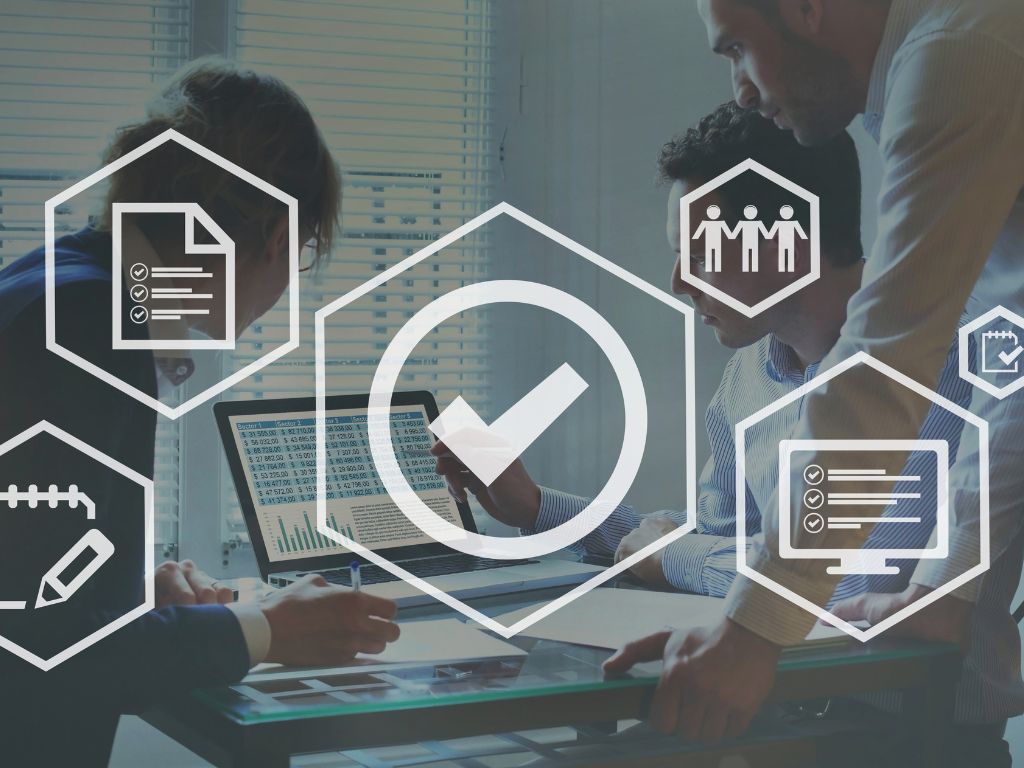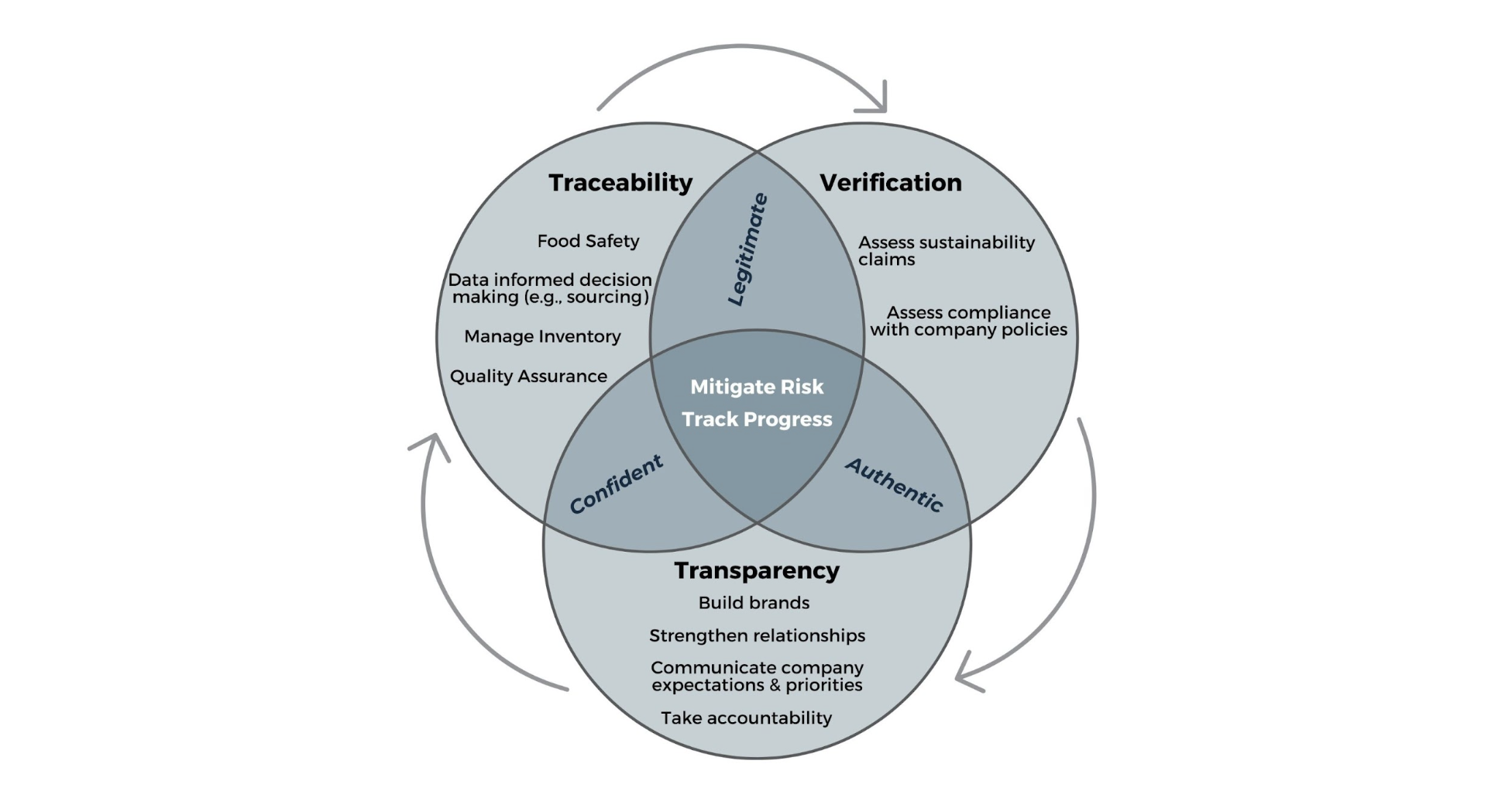
Demystifying Seafood Verification: Q&A with Traceability Experts
In a time where information and transparency are paramount, ensuring the accuracy and reliability of traceability data within seafood supply chains has never been more crucial. Tools like traceability play a critical role in promoting sustainability, combating illegal fishing practices, and providing consumers with accurate information about the origin and quality of their seafood. But traceability systems are only as good as the data that underpins them and without parallel verification efforts, companies can be exposed to risk, consumers left questioning their choices, and governments unable to effectively enforce their policies.
In this Q&A, we explore how traceability and verification are two distinct yet interconnected concepts within the context of seafood supply chain management. Whether you’re a seafood lover, an industry professional, or simply curious how companies can support more robust verification efforts, this is a great starting point to unpack some common questions with expert answers!
Special Thanks To:
Q: There is a lot of jargon in the seafood world. How would you describe the differences (or similarities) between traceability, transparency, verification, and validation?
- Traci Linder, WWF U.S.
Although these separate concepts are complimentary, I’m seeing them often being conflated which adds confusion. In fact, there are times when I’ve read through a report or am having a conversation on traceability and halfway through, I realize it’s actually about transparency with little traceability actually happening. Transparency is broader than traceability, applying to regulations, policies, commitments, and/or expectations. Traceability on the other hand is rooted in data, it’s about getting specific information from specific parts of a supply chain, which is then followed by validation and verification. Is the traceability data plausible? If so, can it be verified against an authoritative source? - Michelle Beritzhoff-Law, FishWise
I’m a big proponent of formal definitions and trying to maintain the true definition of a word, since I agree, they can get thrown around a lot. Traceability is really the ability to track something through a process or supply chain. When I think of validation, I see this as checking whether the data is logical or reasonable. Then comes verification, or the process of establishing the truth or reflecting its intended purpose, for example verifying against a policy, claim, or legal requirements. - Celeste Leroux, Goldfish
There is an issue with conflation of these terms which can range from confusing to outright misleading, such as implying that traceable data is objectively “true” when it actually refers to managing data, regardless of its quality or completeness. Verification concerns the accuracy of data as checked against rules or standards, and validation speaks to the quality of data including its readability and structure. Transparency usually refers to sharing data beyond essential business and government actors. Goldfish, for example, validates and verifies data in traceability systems and supports transparency by offering multiple output formats, but we are not a traceability provider ourselves.

Q: What are some barriers or challenges you’ve seen when it comes to verifying seafood traceability data?
- Michelle Beritzhoff-Law, FishWise
Access to valid data is top of mind to me. It takes time and effort for companies to report data, and report it accurately. Moving past data collection and into verification will need capacity, mental preparedness, and willingness to spend the adequate time to properly validate and verify data. - Celeste Leroux, Goldfish
I see three main challenges, the first of which is the lack of availability of data to verify against. Lots of information is currently locked behind paywalls (e.g., vessel lists or raw AIS or VMS data). A second challenge is poor formatting of data being shared across supply chains or for validation, such as scanned images and PDFs. And third, because of the formatting issues and inconsistency of reference data I just mentioned, the verification process can be extremely time consuming, though we’re trying to help with that. - Traci Linder, WWF U.S.
One of the biggest challenges I see is acquiring digitized data, especially at the first mile (i.e., harvest). Not having standard nomenclature and formatting is also a challenge. For example, if a company or government is receiving species data with a different common name than they’re used to, it adds more complexity in how to verify that important data point. Standardization would go a long way in supporting verification as well as adequate consequences for not verifying data.
Q: What role do different stakeholders (e.g., NGOs, seafood companies, government, technology providers) play in supporting or advocating for data verification?
- Traci Linder, WWF U.S.
While the seafood community currently has some agreed-upon best practices, there aren’t a set of international norms or recommendations on what data needs to be verified and how. Organizations like the Global Dialogue on Seafood Traceability (GDST) that have industry participation and influence may want to consider working with their company partners and governments to develop these norms. As well, cross-sector conversations between these stakeholders can help align common thinking around the information being collected and how everyone agrees it should be verified, ensuring this work doesn’t happen in silos. - Michelle Beritzhoff-Law, FishWise
In the absence of government or international guidelines, entities like the GDST that aligned and provided structure, were really useful in helping companies move between traceability, validation, and now verification. While it’s the government’s responsibility to create and manage regulations, they also need to clearly articulate to companies what data is needed, how both parties can aid verification efforts, and provide a feedback loop to regulated companies. - Celeste Leroux, Goldfish
Government has to be the source of reference data and the creator of verification requirements. With requirements in place, government needs to support compliance with both carrots (incentivization policies) and sticks (law enforcement). NGOs demand the best of industry and government and academia shows us what is possible to meet our shared goals; in combination these two pieces of the nonprofit sector drive progress by offering and advocating for an ever-evolving vision for policy and technology. Technology providers like us are the industry’s bridge between the worlds of today’s governance and tomorrow’s needs. Our job is to make industry as efficient and effective as possible in meeting current and future requirements by building, operationalizing and scaling the best available tech.
Q: Where do you see the future of data verification?
- Eric Enno Tamm, ThisFish
For verification, artificial intelligence (AI) holds incredible promise. Beyond validity, we can use AI and machine learning algorithms to compare current and past data, identifying patterns and trends. In addition, digitized data (versus paper-based systems) often embed automatic types of verification of metadata like timestamps and geolocations, which are hard to corrupt. These technologies have the potential to act as the first line of defense against fraudulent or erroneous data and flag to a company risks or outliers in that data. - Christa Svensson, Tri Marine
We need to have a conversation about what we want the future to look like. There are some of us that want verification and traceability can help us get there. These efforts can have incredible impact for the fishery community, but it’s important to note that it’s not going to happen overnight. Tying traceability and verification together represents a holistic approach to sustainability. - Michelle Beritzhoff-Law, FishWise
We’re going to need more alignment across industry, NGOs, and government to better organize ourselves so these efforts can benefit everyone. If multiple parties can proactively be a part of the conversation, it will save time, allow stakeholders to self-organize, and increase the potential for companies to pilot their own technologies and/or solutions for more robust verification.
Q: Do you have any pieces of advice or final thoughts for our readers when it comes to beginning on this journey of traceability and/or verification of data?
- Eric Enno Tamm, ThisFish
Just moving to a digital traceability system is a large step forward. The more a company makes data transparent within their supply chains, the more eyes they have on the data, and the better they’ll be in catching errors. I used to say that before digitization, the window of opportunity for fraudulent reporting was big enough to drive a truck through. With digitization, that window closes and actually increases the cost of fraud, making it less lucrative. Therefore, it’s important to keep in mind that traceability, transparency, and verification are all intertwined. - Traci Linder, WWF U.S.
The global seafood community still broadly considers collecting seafood product data as the ‘gold star.’ We need to now transition to thinking of traceability and verification as going hand in hand. Verification is already happening with the support of NGOs, technology vendors, and expert consultants. However, I’m not suggesting that every piece of information needs to be verified at all times, but the critical ones related to legality and human rights risks should be prioritized. So, if a company or government is unsure where to start, begin with a few key data elements (KDEs) that are related to higher-risk activities or are more analytically powerful, and then grow from there. - Michelle Beritzhoff-Law, FishWise
Verification is happening already! Now let’s think about how we can create an organized manner to talk about these efforts and how to elevate knowledge and lessons learned across sectors. Embedding verification is critical for a company’s due diligence to properly mitigate, manage, and remedy risk. In fact, the lack of verification in traceability data can and should be seen as its own risk factor, and without verification, it’s hard to monitor progress. - Christa Svensson, Tri Marine
It’s important to have more robust conversations with multiple people rather than only hearing from a few of the same voices. Can we set up a common framework that uses the same terminology? For example, if we’re all going to work on pilot projects, how do we coordinate efforts so that the same project isn’t run 12 times? As a community, let’s have a conversation to create what we want and identify what processes we need to put into place.
Traceability, transparency, validation, and verification should be looked at as an intertwining set of systems and actions supporting holistic sustainability. By adopting reliable verification methods and embracing technology, the seafood industry can create transparent and accountable supply chains. There is no one-size-fits-all solution for verifying data, so it’s up to all stakeholders (government, industry, technology providers, and NGOs) to collectively speak to, advocate for, and action robust verification guidelines and practices.
